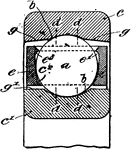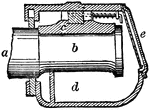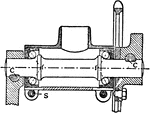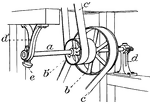Clipart tagged: ‘bearing’

Ball-bearing Hub
"A ball-bearing hub with outward cups. The hub-shell H is turned out of mild steel, and the cups C are…

Ball Bearing
a ball bearing is a type of rolling-element bearing which uses balls to maintain the separation between…

Axle Box
The box on a train which contains the bearings for the spindle of an axle, or joural of an axle.

Axle Box
The box on a train which contains the bearings for the spindle of an axle, or joural of an axle.

Crank-axle Bearing
"The usual form of crank-axle bearing which has inward-cups and is cup-adjusting. The end of the bracket…

Cup-adjusting Hub
"One end of the cup-adjusting hub, with inward bearings. The cones are formed of one piece with the…

Door Style Hinge
A hinge is a type of bearing that connects two solid objects, typically allowing only a limited angle…

Shadow Pin
"A slender length of brass resting in a small brass button and designed to stand vertically on the center…

Shafting
"In machinery, the system of shafts which connects machinery with the prime mover, and through which…